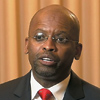How Remote Access Helps Energy CTO Stay Productive
Peter Tseronis, chief technology officer of the Energy Department, has an office at the department’s headquarters but spends only about one day a week working there. The department has established several ways for users to remotely access its network resources, allowing Tseronis to be productive no matter where he goes.
“I carry a mobile phone, and that’s all I really need,” Tseronis says. “It allows me to be nomadic. I am not locked and tethered to my office or my workstation.”
Employees at the Energy Department headquarters can access network resources via a virtual desktop infrastructure. The department has implemented Citrix virtualization software to give users access to encrypted e-mail and calendar functions, as well as other applications and data.
Tseronis uses a tablet computer to access the VDI. “I basically have everything I need on that tablet,” he says. “I’ve got video conferencing capabilities, where I could be part of a webinar or leading a webinar through it. I find the tablet to be more powerful than when I used to carry a laptop around.”
That flexibility is important at an organization such as the Energy Department, which is made up of a wide variety of agencies of different sizes and with differing missions.
“At the Department of Energy, we are viewed as a very disparate, multidimensional, multifaceted agency with varying missions,” Tseronis says. “National security, environmental research, scientific research, it doesn’t get much different than that.”
Users can also gain remote access through a virtual private network. Energy has installed shortcuts on department-issued notebook computers to make it easy for users to gain remote access.
Security is critical for an organization such as Energy that handles sensitive data. In addition to the security provided by the virtual desktop infrastructure and the VPN, the department also has deployed a mobile device management solution for some of its mobile devices.
As mobile computing becomes more commonplace, the Energy Department is continuing to look for ways to improve its remote access offerings for workers.
“What lessons learned can we garner from the national labs, the program offices and entities that are part of the energy community that are using mobile devices today to do their job?” Tseronis asks. “What are the standards and the protocols, such that they meet the department’s needs as well as securing communications?”
Voices

“We started with a virtual private network — VPN — so that people can work using an EEOC-provided device. Having a zero-client on a mobile device is one of those things that we’re promoting for those users where it works.”
— Kimberly Hancher, CIO, Equal Employment Opportunity Commission

“We’re moving very quickly to a virtual desktop infrastructure. This would open up the ability to have more diversity in the kinds of devices that users actually want to have, but still secure our data.”
— Adrian Gardner, CIO, NASA’s Goddard Space Flight Center

“So many of our capabilities now are available through a web browser. If we can move more capabilities to that interface, maybe you don’t store anything locally on the device, and you just access the information and do your job.”
— Joseph Klimavicz, CIO, National Oceanic and Atmospheric Administration
60%
Percentage of federal CIOs and IT managers who say identity management and access control are important tools to enable successful mobile computing
SOURCE: “Mobile Powered Government” (MeriTalk)
By the Numbers
47
Number of agencies that require two-factor authentication for users who remotely access personally identifiable information while teleworking
SOURCE: 2012 Status of Telework in the Federal Government: Report to Congress (Office of Management and Budget)
94%
The rank of data loss/data security among technology professionals who were asked about their top storage concerns
SOURCE: Federal Mobility Report: Security Edition (CDW•G)
$150 million
Estimated amount saved by federal agencies that continued to work remotely during five snow closures in 2009 and 2010
SOURCE: “Work-Life Balance and the Economics of Workplace Flexibility” (Council of Economic Advisers)
14%
Percentage of teleworkers participating in a federal focus group on telework who say technological issues — including remote access to shared drives — poses a challenge for telework
SOURCE: 2012 Status of Telework in the Federal Government: Report to Congress (Office of Management and Budget)
168,558
Number of federal employees teleworking in September 2011, out of 684,589 eligible to telework
SOURCE: 2012 Status of Telework in the Federal Government: Report to Congress (Office of Management and Budget)







